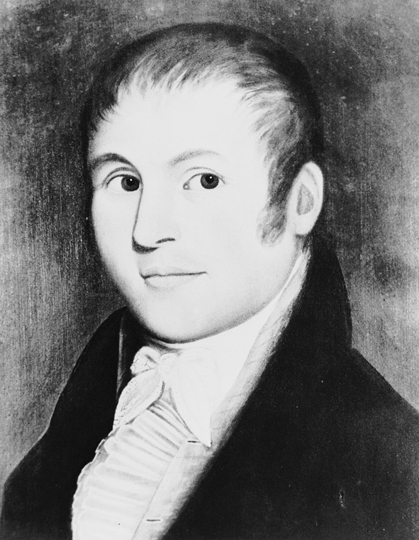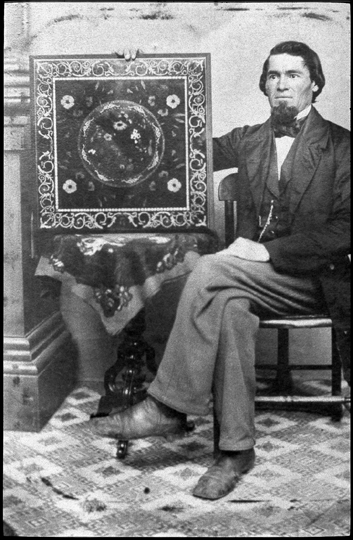Nathan Lombard
(1777-1847)
The painting of Mrs. Keyser, seen to the left, is quintessentially Fancy. She rests on a shapely sofa in a colorful room that opens out to an imaginative landscape. The painting is further enlivened by the inventive treatment of her body and clothing. Mrs. Keyser’s shoulders slope downward to form a bold triangular collar and her deeply pleated dress features balloon-like sleeves that frame her unusually thin waist. Her spirited lace-and-ribbon bonnet and curled hairdo encircle Mrs. Keyser’s narrow face with exuberant ornament. But as Fancy fell from favor after 1840, Americans began to envision themselves in more sober ways. Typical of this shift is the starkly realistic portrait of an unidentified woman, shown to the right. The plainness of her setting, her understated black dress, and the book in her hand reveal a person engaged in serious pursuits. Austere portraits like this were painted during the Fancy era but they became far more common in the troubled decades leading up to the Civil War.
A FAREWELL TO FANCY
1837-1900
Text Panel: The influence of fancy was soon eclipsed by serious matters. The boom years of the mid-1830s came to an abrupt halt when the Panic of 1837 caused the worst depression of the nineteenth century. Important issues now demanded immediate attention, not only the devastated economy but the mounting furor over slavery, as well. This explosive situation exacerbated regional tensions and called into question the economic and moral foundations of a huge segment of American society.
Times of prosperity catapult the human spirit; those of distress cause it to plunge. The exuberant outlook of the previous decades seemed inappropriate for the depressed conditions of the late l830s. Brilliant colors soon gave way to muted tones; joyous abstraction to more carefully contained, more realistic detail.



